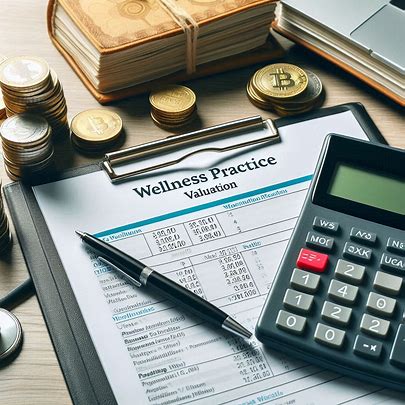Selling Your Wellness Practice? Avoid These Common Valuation Mistakes
 Selling your wellness practice is a big decision. It’s often the result of years of hard work, dedication, and care for your patients. Whether you’re retiring or transitioning to a new chapter, getting the valuation right is critical. A misstep here can cost you thousands—or even millions. Many wellness professionals, from chiropractors to holistic health practitioners, make avoidable mistakes when valuing their practice. These errors can lead to undervaluing their business or scaring off potential buyers. Let’s explore the common pitfalls and how to sidestep them for a successful sale.
Selling your wellness practice is a big decision. It’s often the result of years of hard work, dedication, and care for your patients. Whether you’re retiring or transitioning to a new chapter, getting the valuation right is critical. A misstep here can cost you thousands—or even millions. Many wellness professionals, from chiropractors to holistic health practitioners, make avoidable mistakes when valuing their practice. These errors can lead to undervaluing their business or scaring off potential buyers. Let’s explore the common pitfalls and how to sidestep them for a successful sale.
One major mistake is focusing only on financials. Revenue and profit matter, but they don’t tell the whole story. Buyers want to see a thriving practice with loyal patients and growth potential. For example, a practice with consistent patient retention and strong community ties is more valuable than one with high revenue but shaky loyalty. To avoid this trap, consider factors like patient engagement, brand reputation, and operational efficiency. Curious about other ways to protect your practice’s value? Check out how to avoid practice valuation mistakes for expert insights. By looking beyond the numbers, you present a more compelling case to buyers.
Don’t Ignore Market Trends
Another error is ignoring market trends. The wellness industry evolves fast. Trends like telehealth, personalized wellness plans, or integrative care can boost your practice’s appeal. If you’re not showcasing how your business aligns with these trends, you’re leaving money on the table. For instance, a practice offering virtual consultations or cutting-edge therapies like cryotherapy might attract more interest than one stuck in outdated methods. Stay informed about industry shifts. Highlight how your practice adapts to modern demands. This approach signals to buyers that your business is future-proof.
Patient Engagement Matters
Patient engagement is another overlooked factor. A practice with a loyal patient base is a goldmine. Buyers aren’t just purchasing your equipment or location—they’re investing in relationships. High patient retention shows stability and trust. Are your patients raving about your services? Do they refer friends and family? These are signs of a healthy practice. To strengthen this, focus on patient satisfaction before selling. Simple steps like sending follow-up emails or offering loyalty programs can make a difference. Show buyers that your patients are committed, and your practice’s value will soar.
Showcase Growth Potential
Growth potential often gets ignored. Buyers want a practice with room to expand. If your business is maxed out—say, you’re booked solid with no space for new patients—it might seem less attractive. On the flip side, a practice with untapped opportunities, like adding new services or expanding into a nearby market, is a draw. Highlight these possibilities during valuation. Maybe you’ve got a great location but haven’t marketed enough. Or perhaps you could add a new practitioner to handle more clients. Paint a picture of what’s possible. It excites buyers and boosts your asking price.
Streamline Operations
Don’t forget about operating systems. A practice that runs like a well-oiled machine is worth more. Disorganized records, outdated software, or a chaotic scheduling process can scare buyers away. Before selling, streamline your operations. Use modern practice management software. Ensure your financial records are clear and up-to-date. A buyer will feel confident if they see a business that’s easy to take over. Plus, it shows you’ve cared for the practice, which adds to its perceived value.
Avoid Emotional Valuation
Emotions can cloud judgment during valuation. Some owners overvalue their practice due to personal attachment. Others undervalue it, thinking it’s “just a small business.” Both mistakes can hurt. Hire a professional appraiser who understands the wellness industry. They’ll provide an objective valuation based on market data, financials, and intangibles like goodwill. This step ensures you’re not guessing—or worse, losing out.
Timing Is Everything
Timing is another critical factor. Selling too soon or too late can affect your valuation. If your practice is declining due to market shifts or personal burnout, waiting too long could lower its value. Conversely, selling during a growth phase can maximize returns. Monitor your practice’s performance and the broader market. Aim to sell when your business is strong and the market is favorable.
Avoiding these pitfalls takes effort, but it pays off. A well-valued practice attracts serious buyers and ensures you get what your business is worth. Focus on the big picture—financials, market trends, patient loyalty, growth potential, and operations. With careful planning, you’ll transition out of your wellness practice with confidence and financial security.




